24 Tempting Northern European Pastries Worth Discovering
Northern European pastries showcase a rich culinary heritage that tantalizes taste buds with incredible diversity and delightful textures.
Bakers in this region have perfected sweet treats that reflect centuries of cultural traditions and local ingredients.
Each pastry tells a story of regional creativity and culinary passion.
Delicate techniques passed through generations transform simple components into extraordinary delicacies that surprise and comfort.
Sophisticated yet humble, these baked wonders represent more than just food - they embody community connections and familial warmth.
Ingredients like butter, flour, and seasonal fruits come together in magical combinations that elevate simple recipes.
Skilled artisans craft these delectable creations with precision and love, honoring time-honored techniques.
Dive into these 24 popular Northern European pastries that will transform your understanding of sweet culinary artistry:
Popular Northern European Pastries to Warm the Heart
Bakeries in Northern Europe fill the air with the scent of spiced buns, flaky danishes, and fruit-filled tarts. Pastry here is comfort, tradition, and celebration all in one.
Kanelbulle
Kanelbulle are iconic Swedish pastries celebrated for their aromatic cardamom-infused dough and swirling cinnamon-sugar filling.
Swedish bakeries and homes treasure these sweet rolls as a cornerstone of fika, their cherished social coffee break tradition.
Bakers craft these treats with yeasted, butter-rich dough rolled thin and generously coated with warm spices and sugar.
Traditionally topped with pearl sugar or slivered almonds, kanelbulle have deep cultural significance in Sweden.
Baking enthusiasts trace the pastry's origins to early 20th-century culinary experiments with sweet bread recipes.
Swedish culture honors these rolls so deeply that October 4th is officially designated as Cinnamon Roll Day nationwide.
Home kitchens and professional bakeries alike embrace this beloved pastry as a symbol of comfort and connection.
Each soft, spiral-shaped roll represents a delicious piece of Swedish culinary heritage.
Danish Pastry (Wienerbrd)
Danish pastry is a flaky, buttery masterpiece originating from Denmark with multilayered dough created through precise folding and butter lamination techniques.
Bakers craft these golden treats by repeatedly layering butter between thin dough sheets, producing a crisp, airy texture that shatters delicately when bitten.
Danes traditionally enjoy these pastries during morning breakfasts, often filled with sweet ingredients like fruit preserves, vanilla custard, or almond paste.
European bakeries have embraced this technique, adapting the pastry with regional flavor variations.
Immigrant bakers spread Danish pastry techniques across global kitchens, transforming it into an international breakfast staple.
Sophisticated yet simple, these pastries require exceptional skill to create perfectly layered, butter-rich dough.
Bakery windows showcase these golden, flaky creations in countless shapes and sizes.
Finnish Doughnuts (Munkki)
Munkki are traditional Finnish deep-fried doughnuts celebrated for their rich cardamom-infused flavor and cultural significance during May Day celebrations.
Monks potentially inspired their distinctive round shape or brown color, with historical connections suggesting religious origins during Lent.
Finnish bakers craft these treats using buttery, leavened dough that creates a soft, golden exterior when deep-fried.
Sugar-coated or occasionally filled with sweet fruity centers, munkki represent a beloved national pastry that connects generations through shared culinary tradition.
Circular or thick ring shapes define their classic presentation, reflecting generations of baking expertise.
Regional variations highlight subtle differences in preparation techniques across Finland.
Sweet cardamom provides a signature warmth that distinguishes these doughnuts from other European pastries.
Modern munkki continue to symbolize Finnish festive food culture, enjoyed during seasonal celebrations and family gatherings.
Cardamom Buns (Kardemommeboller)
Kardemommeboller are fragrant Nordic pastries bursting with warm cardamom flavor that originated in Sweden as sweet breakfast and coffee break treats.
Nordic bakers knead soft dough using milk, butter, yeast, sugar, flour, crushed cardamom seeds, and salt to create these distinctive knotted buns.
Scalded milk blends with melted butter before mixing with remaining ingredients to form a smooth, elastic dough.
Bakers carefully fold and twist the dough into signature knots that give these buns their classic shape.
Yeast helps the dough rise and develop complex flavors before baking.
Precise baking ensures a golden-brown exterior with a soft, aromatic interior.
Fresh-baked buns receive a final brushing of butter for extra richness.
Scandinavians enjoy these spicy-sweet pastries alongside coffee or as a morning indulgence.
Semla
Semla are Swedish cream-filled pastries bursting with rich cultural tradition and sweet decadence.
Swedish bakeries craft these iconic treats from soft wheat buns subtly spiced with cardamom.
Bakers slice each bun and generously layer almond paste inside creamy vanilla-whipped filling.
Powdered sugar elegantly crowns the top of this festive dessert.
Historically served on Fat Tuesday before Lent, semla represents a moment of culinary indulgence.
Medieval Swedes originally enjoyed these luxurious pastries as a final feast before religious fasting.
Nordic families continue preparing semla during winter celebrations.
Modern bakeries now serve these beloved treats throughout the season, maintaining a delicious connection to Swedish culinary heritage.
Joulutorttu
Joulutorttu are star-shaped Finnish Christmas pastries packed with sweet plum jam and crafted from delicate, buttery puff pastry.
Nordic bakers carefully fold pastry corners into distinctive pinwheel shapes that create elegant geometric designs.
Swedish and Finnish families traditionally serve these crispy treats during holiday celebrations.
Home cooks prepare the pastries by filling thin pastry sheets with rich plum preserves before baking until golden brown.
Each pastry emerges from the oven with a beautiful, flaky texture and warm, gooey jam center.
Powdered sugar sprinkled on top adds a festive white dusting that enhances the pastry's visual appeal.
Finnish bakeries and home kitchens consider joulutorttu an essential Christmas season dessert.
Generations have enjoyed these nostalgic pastries as a beloved seasonal tradition across Scandinavian households.
Lortsy
Lortsy is a beloved half-moon shaped Finnish pastry originating from Savonia's regional cuisine that delights locals with its versatile fillings and crispy deep-fried texture.
Traditional recipes feature both sweet and savory variations including minced meat and fruit jam options.
Markets across Finland frequently showcase these golden-brown pastries as popular street food snacks.
Skilled bakers carefully craft each pastry by folding thin dough into a distinctive crescent shape.
Savory versions often include ground meat or vegetable fillings.
Sweet interpretations incorporate fruit preserves like berry or apple jams.
Butter and flour form the pastry's classic base ingredients.
Regional variations reflect local culinary preferences and seasonal availability of ingredients.
Skillingsboller
Skillingsboller are Norwegian sweet pastries originating from Bergen that feature a rich buttery dough swirled with cinnamon and sugar.
These circular rolls combine flour, milk, yeast, eggs, sugar, cardamom, and generous amounts of butter to create a soft, aromatic treat.
Bakers brush the warm pastries with extra butter and sprinkle them with sugar and cinnamon for added sweetness.
Norwegian bakeries typically serve skillingsboller as afternoon snacks paired with coffee.
Almonds are an optional ingredient that adds texture to the rolls.
The name translates to "penny bun" in English, reflecting its historical pricing.
Some Norwegians enjoy these rolls with brown cheese (brunost) for a unique flavor combination.
Traditional skillingsboller represent a beloved part of Norwegian baking culture.
Onsdagssnegl
Onsdagssnegl represents Denmark's beloved weekly cinnamon roll tradition originating in Copenhagen's Sankt Peders bakery.
Massive spiral pastries emerge every Wednesday as locals and tourists eagerly await their chance to purchase these massive sweet treats.
Bakers carefully craft these large cinnamon rolls with layers of soft dough, generously coated in sweet cinnamon sugar mixture.
Wednesday mornings spark excitement as bakery lines form with pastry enthusiasts wanting to experience this delicious Danish cultural phenomenon.
Sankt Peders bakery remains most famous for creating the original and most iconic version of this beloved Wednesday specialty.
Danes consider these rolls a cherished weekly ritual that connects community through shared culinary enjoyment.
Fresh-baked rolls typically cost around 35 kroner and sell out quickly.
Copenhagen bakeries continue this delightful tradition that has become a beloved midweek comfort food.
Kringle
Kringle represents a delicate oval-shaped pastry originating from Danish bakers who transformed traditional Austrian techniques into a flaky, layered treat.
Monks first developed this delightful pastry in Roman-Catholic regions before Danish bakers perfected its distinctive recipe.
European immigrants brought kringle to Wisconsin, where it became a state specialty with numerous sweet and savory fillings.
Danish versions typically feature puff pastry or yeasted dough stuffed with rich ingredients like marzipan, butter, sugar, and raisins.
Austrian baking influences shaped its original preparation methods across Nordic countries.
International popularity spread kringle from European monasteries to global bakeries.
Regional variations now showcase unique local ingredients and cultural interpretations.
Laskiaispulla
Lihapullat are traditional Finnish meatballs originating from Nordic cuisine, combining ground beef or pork with breadcrumbs, onions, and signature spices like allspice and nutmeg.
Scandinavian kitchens typically serve these tender meatballs with creamy mashed potatoes, lingonberry jam, and pickled cucumber.
Home cooks often prepare them as a comforting family meal, carefully mixing meat with egg and breadcrumbs for perfect texture.
Small and round, these meatballs feature a crispy exterior from pan-frying and a juicy interior that melts in your mouth.
German and Swedish influences shaped this classic Finnish dish over generations.
Regional variations include different meat blends and spice combinations.
Modern Finnish restaurants continue serving lihapullat as a beloved national staple that connects generations through shared culinary traditions.
Skolebrd
Skolebrd are classic Norwegian pastries known for their rich, creamy custard-filled centers and aromatic cardamom dough.
Scandinavian bakers craft these sweet treats by combining butter, milk, yeast, sugar, flour, and cardamom into a soft, fragrant bread dough.
Bakers carefully prepare a luxurious custard using milk, cream, egg yolks, sugar, cornflour, and vanilla to create a smooth, silky filling.
After baking the buns to golden perfection, they generously stuff each pastry with the creamy custard.
Desiccated coconut sprinkled on top adds a delightful textural contrast and subtle sweetness.
Norwegian families often enjoy these buns during afternoon coffee breaks or special gatherings.
Traditional bakeries and home kitchens throughout Norway continue to prepare skolebrd using time-honored recipes.
Regional variations might include slight modifications to the custard or garnish, reflecting local culinary preferences.
Tartlets With Chicken And Asparagus (Hns I Asparges)
Tartlets med høns og asparges are delicate Danish pastries featuring buttery puff pastry shells generously filled with a rich, creamy chicken and asparagus mixture.
Originating in early 20th-century Denmark, these elegant mini-tarts showcase the country's culinary finesse and love for delicate appetizers.
Small yet sophisticated, they balance tender chicken pieces with fresh asparagus in a velvety sauce.
Traditional Danish restaurants and home kitchens frequently serve these tartlets during special gatherings and festive occasions.
Guests appreciate their elegant presentation and complex flavor profile.
Wedding receptions and holiday buffets often feature these bite-sized delicacies.
Puff pastry provides a crisp, golden exterior that contrasts beautifully with the smooth, savory filling.
European cuisine enthusiasts consider these tartlets a perfect example of refined Danish gastronomy.
Tebirkes
Tebirkes are Danish flaky pastries layered with sweet marzipan and generously sprinkled with crunchy poppy seeds.
Danish bakeries craft these delicate pastries using a rich mixture of flour, yeast, eggs, milk, and butter.
Bakers carefully roll out soft dough and spread a smooth marzipan-butter blend across its surface.
After folding the dough, they let it rise until doubled in volume.
Poppy seeds are generously scattered on top before baking, creating a distinctive crunchy texture.
Traditional preparation requires precise mixing of ingredients to achieve the perfect balance of sweetness and flakiness.
These pastries often accompany morning coffee or serve as a light breakfast treat.
Karelian Pasty (Karjalanpiirakka)
Karjalanpiirakka are Finnish rice pasties originating from Karelia that showcase a distinctive open-topped design with a thin rye crust.
Regional bakers craft these savory pastries by carefully filling delicate rye dough with creamy rice porridge or mashed potatoes.
Traditional preparation involves creating an oval shape with edges gently folded to reveal the soft interior.
Finnish families often serve these pasties warm with munavoi, a traditional butter-egg spread that enhances their rich flavor.
Local bakeries and home kitchens throughout Finland continue producing these beloved pastries using generations-old techniques.
Butter brushing on the exterior creates a golden, slightly crisp surface that complements the smooth inner filling.
Karjalanpiirakka represent more than just food - they embody Finnish culinary heritage and regional cultural traditions.
Modern variations include vegetable and meat fillings, though rice remains the most classic ingredient.
Napoleonbakelse
Napoleon pastry is a luxurious Swedish dessert featuring multiple crisp layers of buttery puff pastry filled with silky vanilla custard and billowy whipped cream.
Swedish bakers craft this delicate pastry by carefully preparing thin, flaky pastry sheets using flour, butter, water, egg yolks, salt, and a touch of lemon juice or vinegar.
Each rectangular pastry layer is meticulously stacked and generously coated with creamy vanilla custard and airy whipped cream.
Bakers skillfully alternate the pastry and cream layers to create a stunning visual and textural contrast.
Originating from French culinary traditions, this Swedish version offers a lighter, more elegant interpretation of the classic mille-feuille.
Napoleon pastry demands precision and patience during preparation, with each layer carefully rolled and baked to golden perfection.
Rich yet delicate, this dessert provides a harmonious blend of crisp pastry and smooth, sweet fillings.
Smultring
Smultring are traditional Norwegian ring-shaped doughnuts celebrated during Christmas celebrations with distinctive spices and rich cultural significance.
Norwegian bakers craft these small treats using dense dough infused with warm cardamom, cinnamon, and citrus zests like lemon or orange.
Liqueur often enhances their complex flavor profile, adding depth to their unique taste.
Lard serves as the traditional frying medium, creating a crisp exterior and soft interior.
Hand-shaped into circular forms, these doughnuts reflect generations of Norwegian culinary craftsmanship.
Winter festivities prominently feature smultring as beloved sweet snacks.
Families and friends gather to enjoy these aromatic pastries during holiday gatherings.
Generations have passed down recipes, preserving this delightful Norwegian food tradition.
Finnish Funnel Cake (Tippaleipa)
Tippaleipä are crispy, golden-brown Finnish funnel cakes crafted from delicate egg batter poured through a piping bag into hot oil.
Simmering in deep fryers, these intricate pastries create lacy, web-like patterns that transform into crunchy treats.
Traditionally served during Finnish spring celebrations like Vappu, these delicate sweets symbolize seasonal joy and festivity.
Powdered sugar generously coats the irregular shapes, adding a sweet finish to the light, airy dessert.
Home bakers and festival vendors frequently prepare these treats for outdoor gatherings.
Finnish families often enjoy tippaleipä alongside sparkling wine or festive punch.
Their unique texture comes from carefully controlled oil temperature and batter consistency.
Street markets and home kitchens alike celebrate this crisp, sugary Finnish specialty during springtime festivities.
Budapestbakelse
Budapestbakelse sparkles as a Swedish meringue-based pastry roll featuring a luxurious combination of creamy textures and rich flavors.
Swedish pastry chef Ingvar Strid originally crafted this elegant dessert with a delicate meringue base made from whipped egg whites and toasted hazelnuts.
Rolled and filled with fluffy whipped cream and mandarin orange slices, the pastry becomes a stunning visual and gustatory experience.
Dark chocolate drizzles elegantly across the top, complemented by a light dusting of icing sugar and cocoa powder.
Finnish bakers sometimes create their own version using bananas and raspberries instead of mandarin oranges.
Despite its name suggesting Hungarian origins, this dessert is purely Swedish in creation.
Strid's innovative recipe quickly became a beloved national sweet treat.
Bakeries and home cooks across Sweden continue to celebrate this classic dessert with pride and precision.
Mandelkubb
Mandelkubb are traditional Swedish almond pastries celebrated for their intense bittersweet flavor and unique texture.
These rich baked treats originate from Sweden's culinary heritage, featuring crushed bitter almonds as their signature ingredient.
Bakers carefully blend bitter almonds with flour, sugar, and eggs to create a distinctive dough.
Swedish families often prepare mandelkubb during special occasions and holiday gatherings.
Almonds provide a complex nutty essence that distinguishes these pastries from other sweet breads.
Traditional recipes pass through generations, maintaining authentic preparation methods.
Each pastry represents a delicate balance between sweet and bitter flavor profiles.
Regional variations across Sweden reflect local baking traditions and personal family recipes.
Klenat
Klenatis Nordic deep-fried pastries boasting a distinctive rhomb-shaped design that transforms simple yeasted dough into crispy golden treats.
These traditional delicacies originate from Scandinavian culinary traditions, featuring buttery batter often enhanced with liqueurs for complex flavor profiles.
Bakers carefully roll and knot the dough into unique trapezoid shapes before deep-frying them to achieve a perfect golden-brown exterior.
Scandinavian families frequently prepare klenatis during festive seasons like Christmas and winter celebrations.
Regional variations exist across Nordic countries, with some regions adding subtle spices or alternative flavoring techniques.
Home bakers and professional pastry makers share a passion for creating these crunchy, lightweight pastries.
Sweet and slightly crisp, klenatis represent a beloved Nordic comfort food with generations of culinary heritage.
Each pastry offers a delicate balance between rich butter notes and light, airy texture.
Gustaf Adolfsbakelse
Gustaf Adolfsbakelse celebrates Swedish royal history through a delicate pastry honoring King Gustav II Adolf's legacy.
Bakers craft this traditional dessert with a light sponge cake base layered with smooth vanilla cream and tangy blackcurrant jelly.
Chocolate or marzipan silhouettes of the king elegantly crown the pastry, transforming a simple sweet into a historical tribute.
Eggs, sugar, flour, and baking powder create the tender cake foundation.
Heavy cream adds richness to the creamy filling.
Historical significance blends seamlessly with culinary craftsmanship.
Swedish bakeries prepare this treat annually on November 6 to commemorate the king's memory.
Generations continue enjoying this edible piece of national heritage.
Semmelwrap
Semmelwrap blends traditional Swedish pastry techniques with contemporary street food innovation, transforming classic semlabun into a portable handheld treat.
Swedish bakers created this modern adaptation by rolling thin semla dough and lightly baking it into a flexible wrap.
Almond paste and whipped cream serve as the signature filling, mirroring traditional semla ingredients.
Scandinavian bakeries now offer this convenient version of the classic Shrove Tuesday dessert.
Home cooks and professional bakers alike enjoy experimenting with the wrap's flexible format.
Younger generations appreciate its convenient eating style compared to the original pastry.
Regional variations now include different cream and nut paste combinations.
Street food markets across Sweden have embraced this creative pastry reimagination.
Butterkaka
Butterkaka blends Swedish pastry traditions with creamy indulgence, featuring a soft yeast dough rolled with rich butter, sugar, and optional vanilla or cardamom filling.
Swedish bakeries craft this sweet treat by carefully spreading a luscious mixture across thin dough layers.
Vanilla custard or almond paste frequently enhances its already decadent profile.
Traditional preparation involves gentle rolling and precise folding techniques passed through generations.
Bakeries across Sweden serve butterkaka as a popular morning or afternoon snack.
Regional variations might include different spice combinations or additional nuts.
Sweet and buttery notes characterize its distinctive flavor profile.
How Are Northern European Pastries Different From Those in Southern Europe?
Northern European pastries tend to focus on hearty, comforting flavors with a simpler, rustic approach, while Southern European pastries often emphasize lighter textures and vibrant, fruity flavors:
Why Do Spices Like Cardamom and Cinnamon Feature So Prominently in Nordic Baking?
Cardamom and cinnamon are staples in Nordic baking because they bring warmth and depth, perfectly complementing the region’s cooler climate and traditional ingredients:

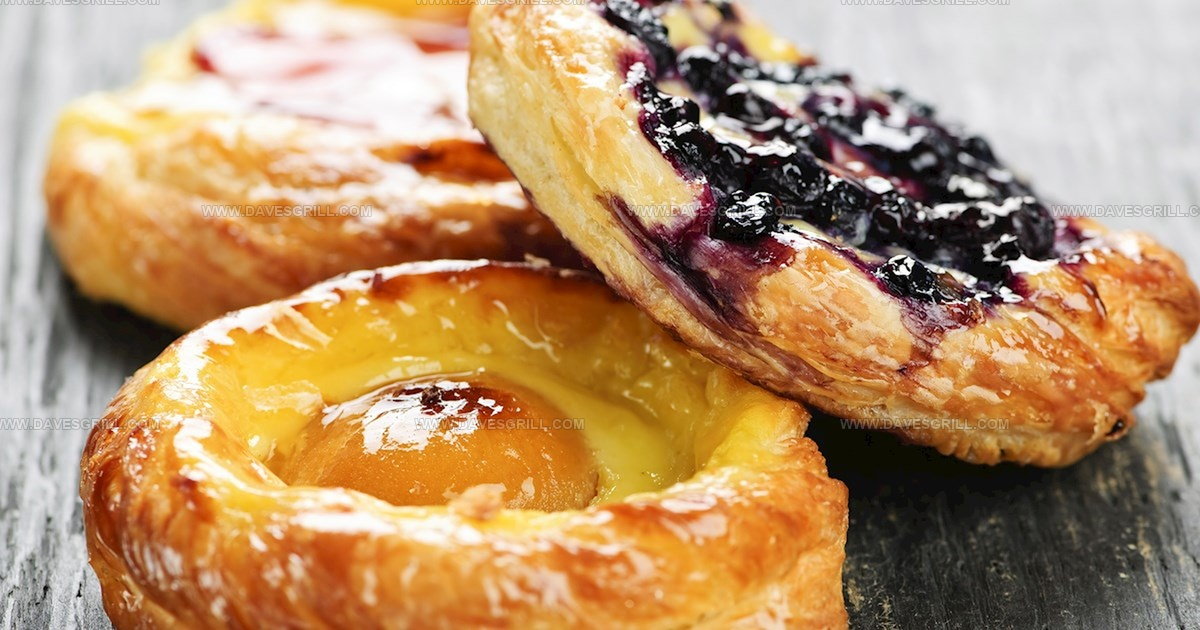
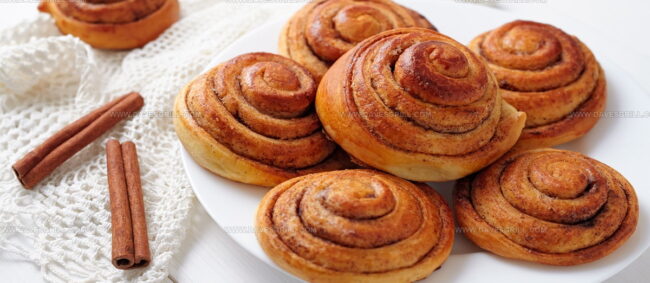
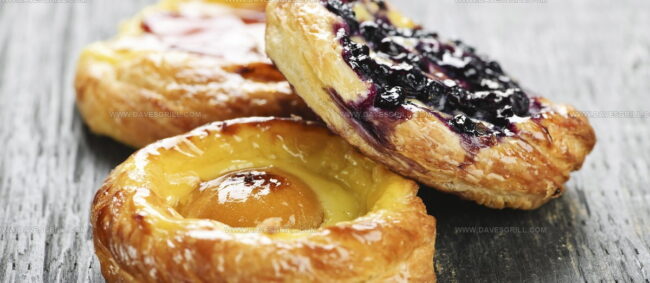
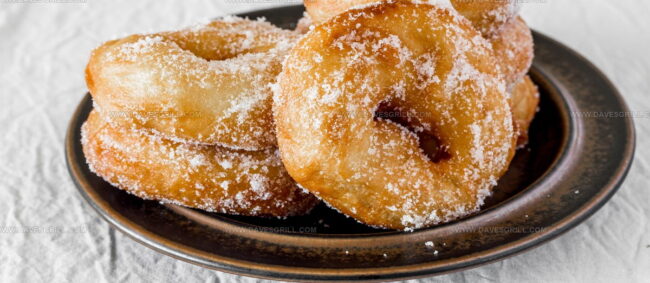
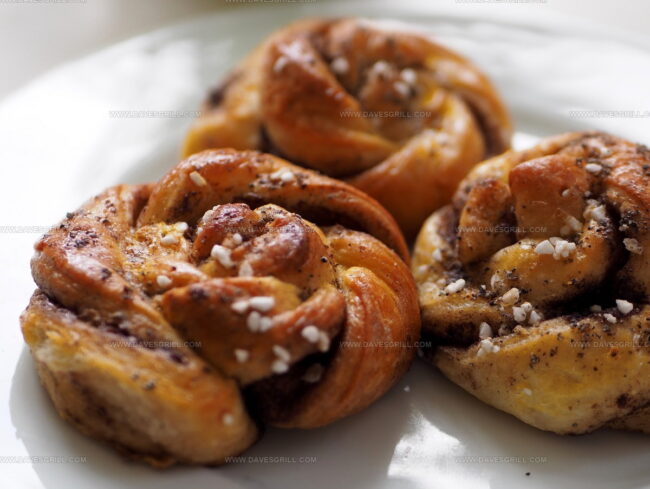
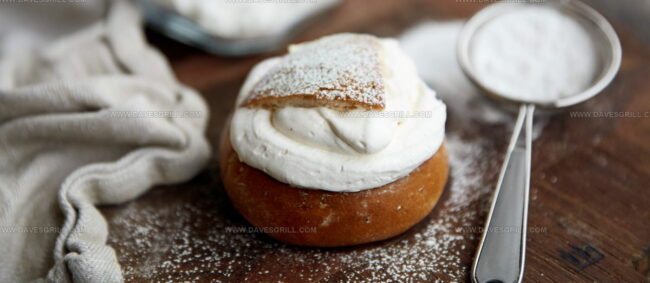
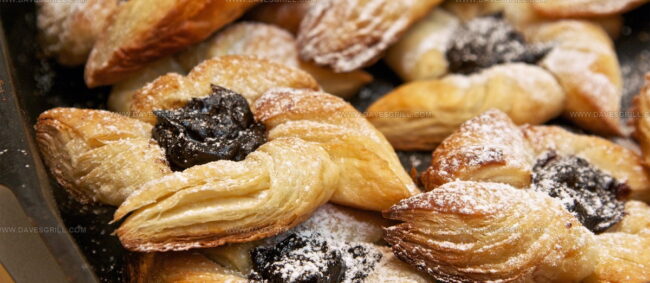
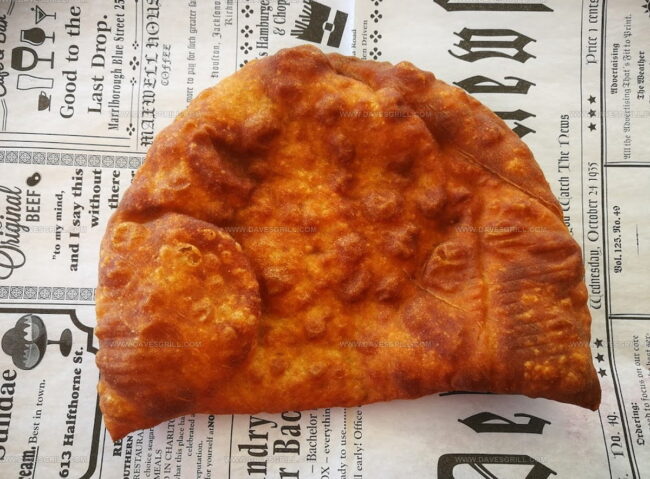
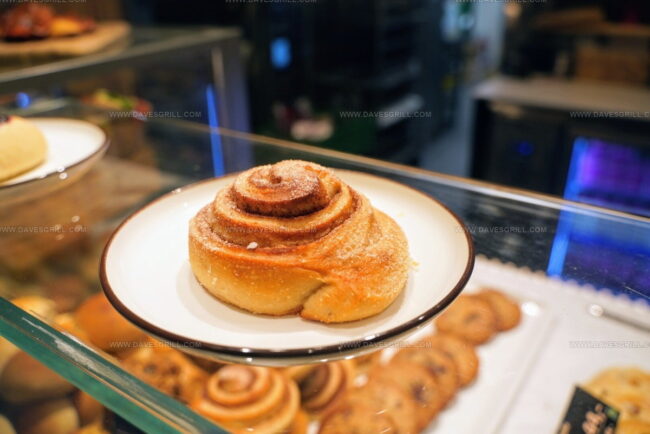
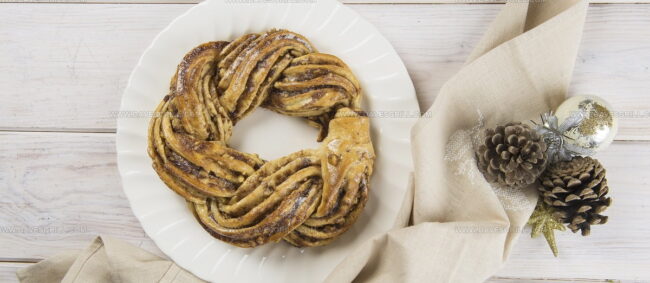
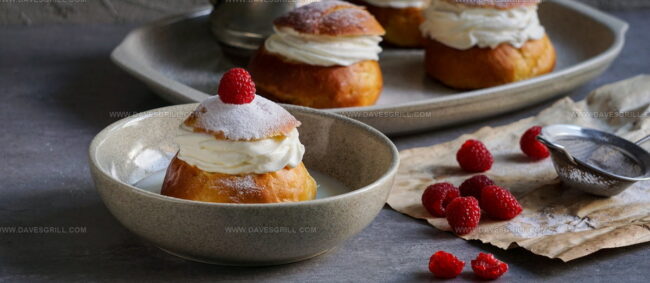
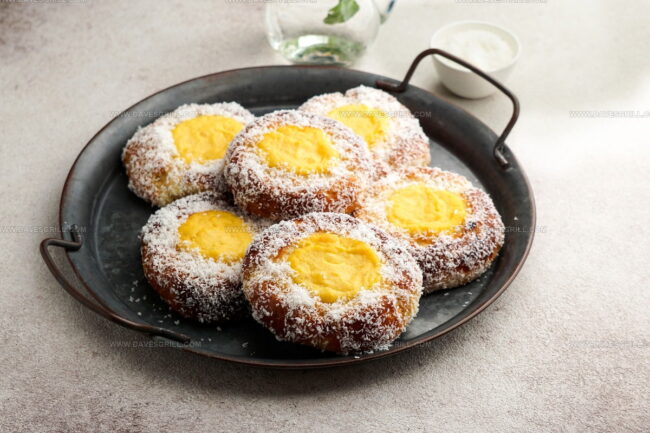
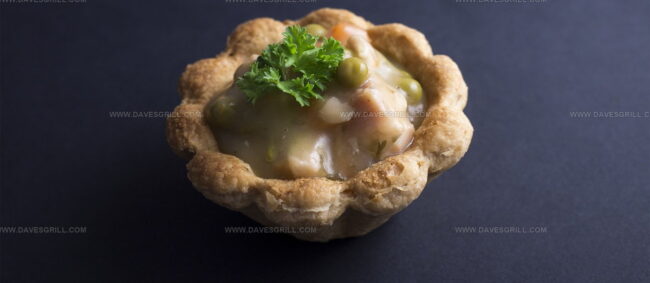
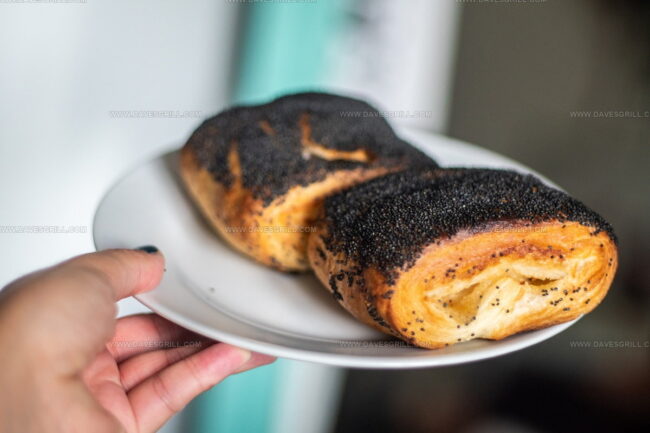
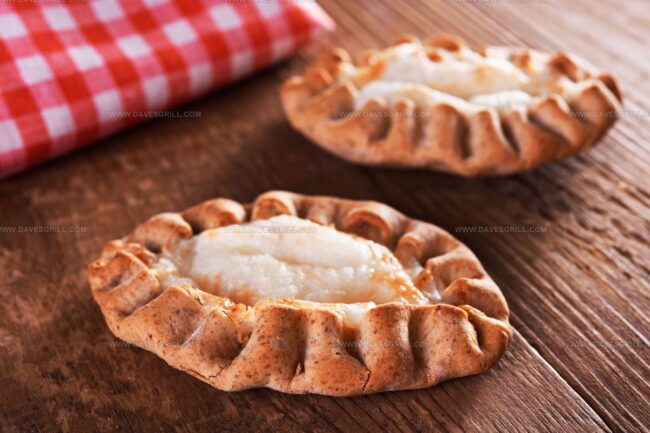
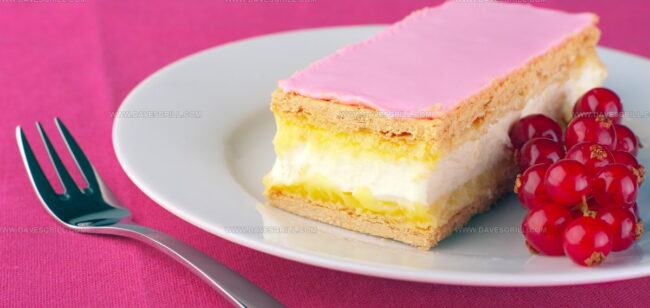
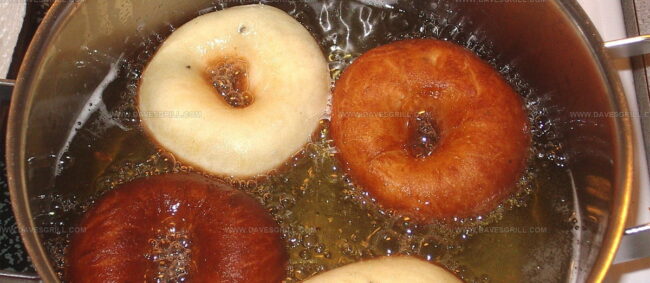
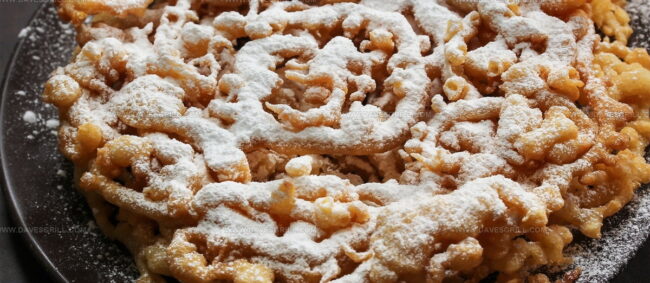
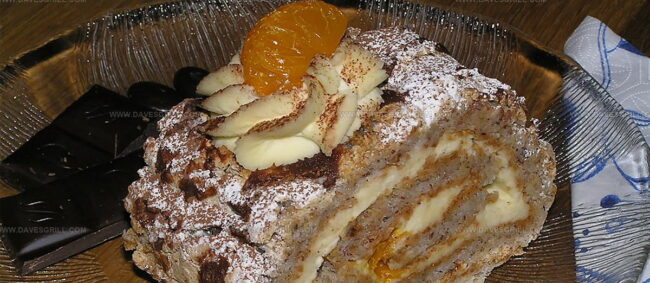
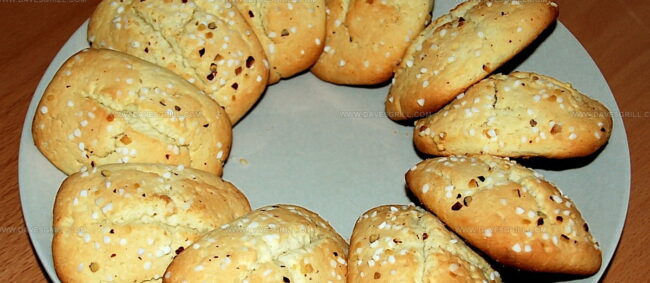
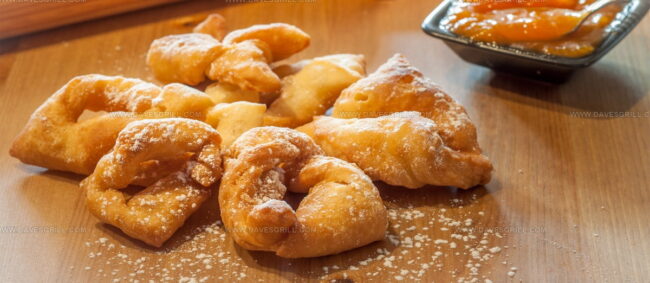
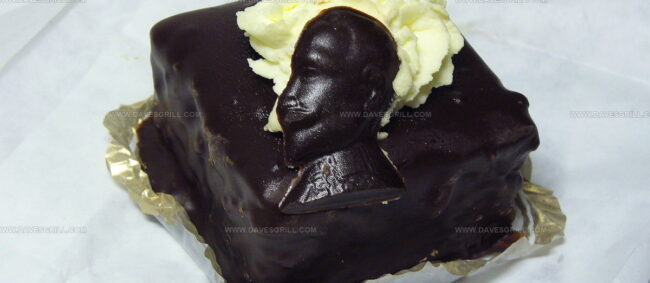
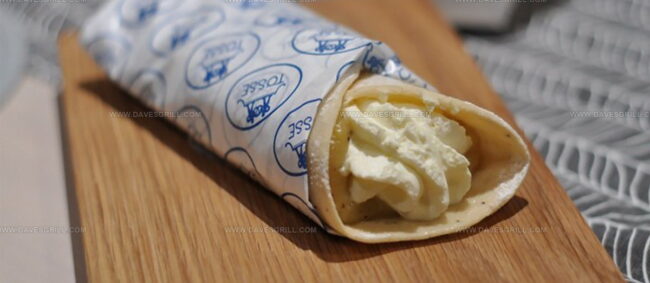
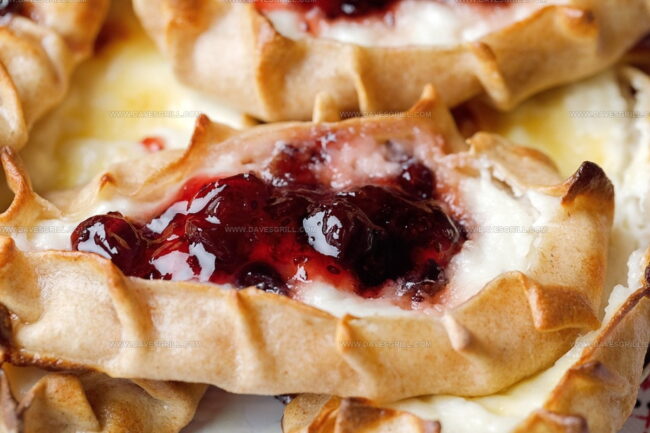
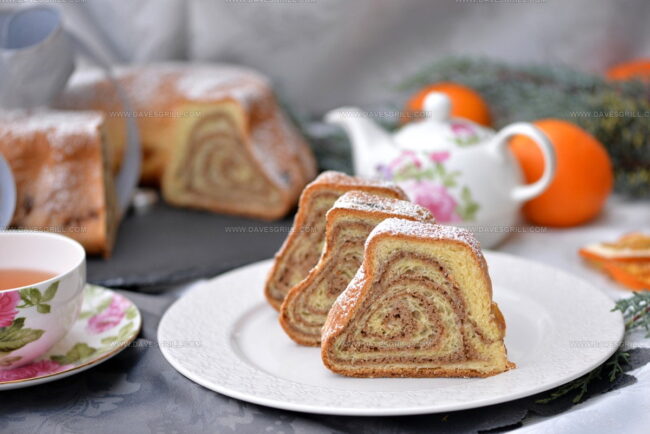
Dave Mitchell
Founder & Chief Recipe Developer
Expertise
Education
Asheville-Buncombe Technical Community College
Associate of Applied Science in Culinary Arts
Focus: Comprehensive training in culinary techniques, kitchen management, and menu planning, with a special emphasis on grilling and outdoor cooking.
Dave Mitchell is the heart behind Daves Grill, a cook, writer, and lover of all things grilled. He studied Culinary Arts at Asheville-Buncombe Technical Community College and spent years cooking, testing, and sharing recipes that actually work.
Dave started Daves Grill to keep things simple: one great recipe at a time. His food is bold, easy to follow, and made for real people with regular kitchens. From juicy steaks to quick sides, Dave’s recipes bring the heat without the hassle.